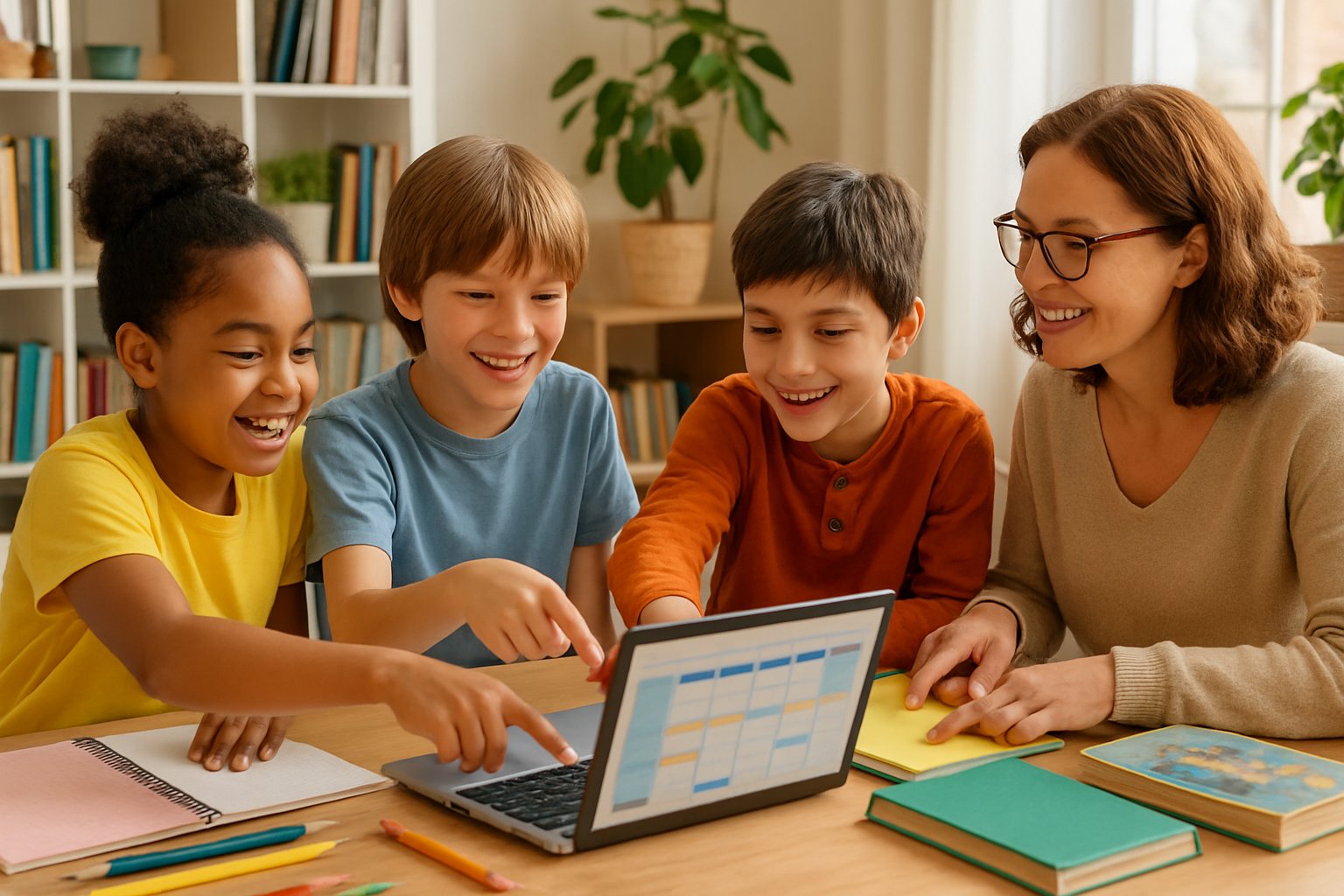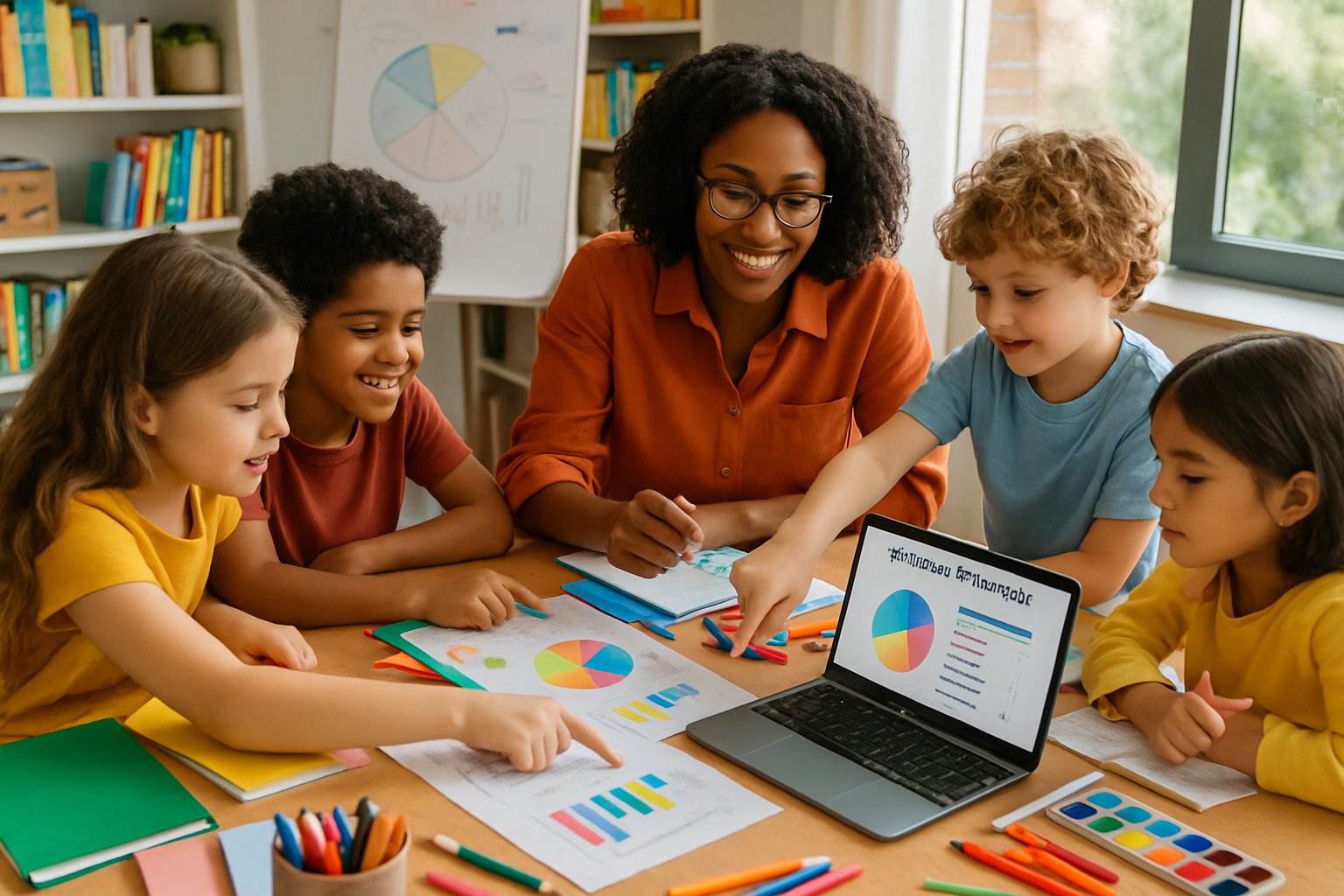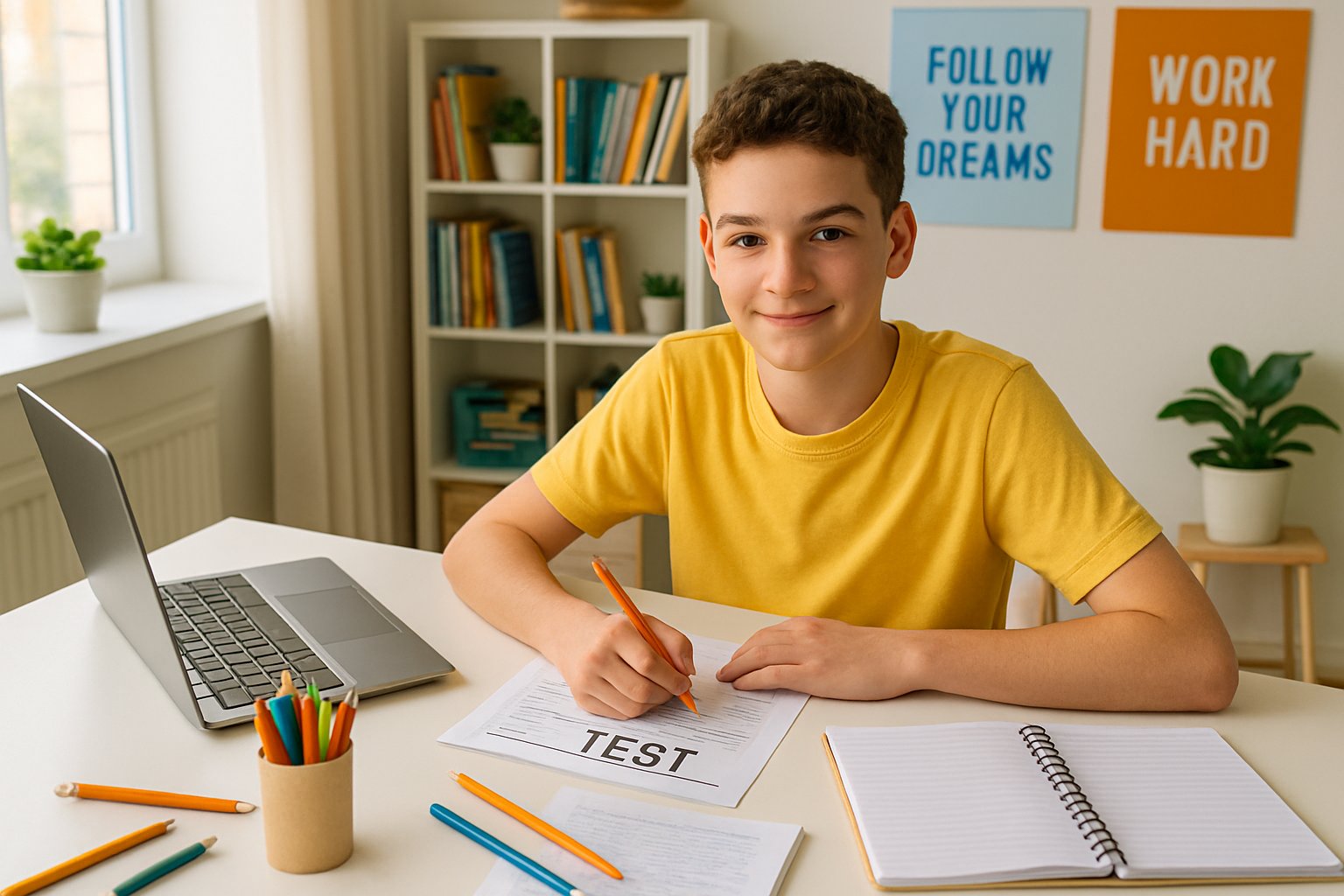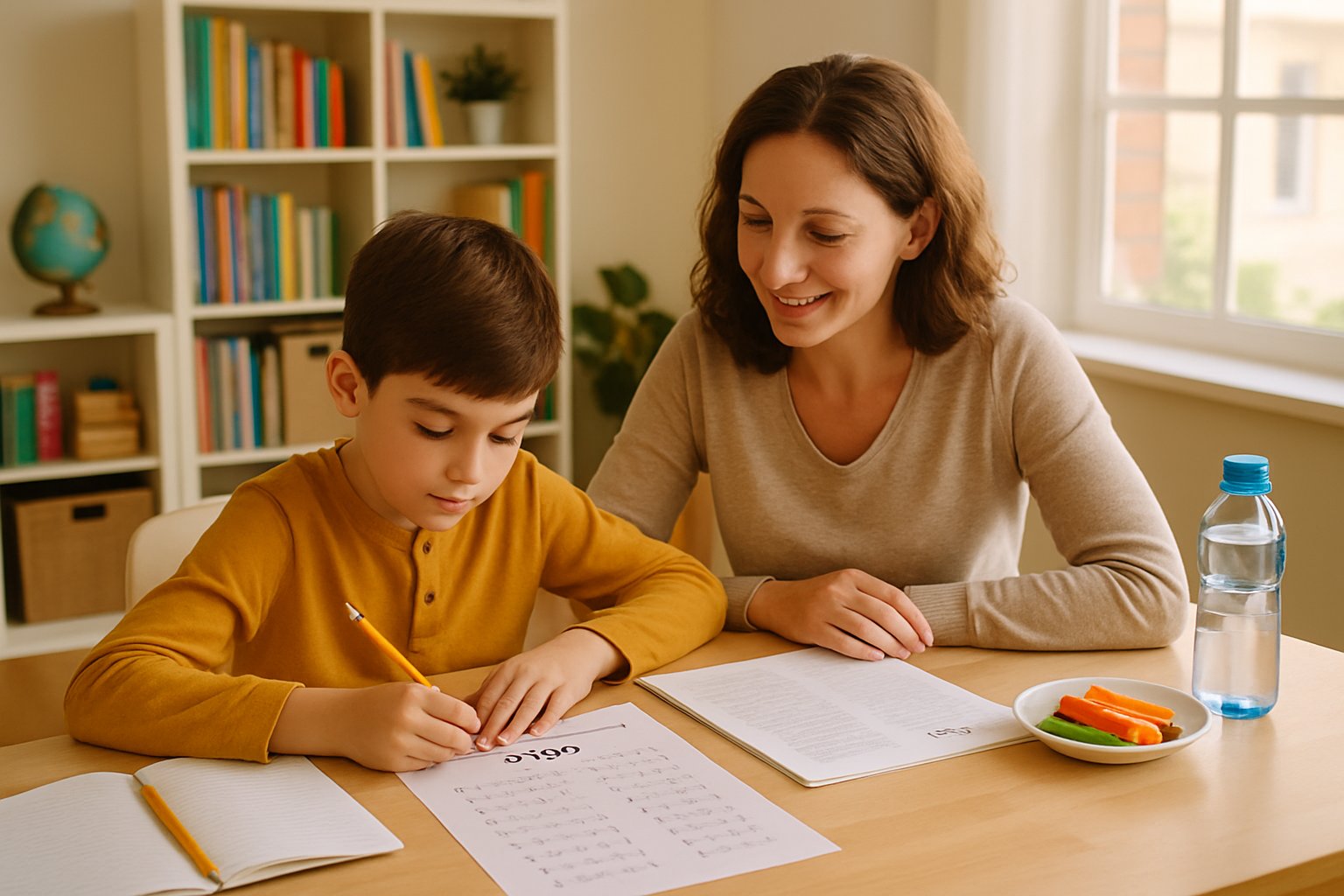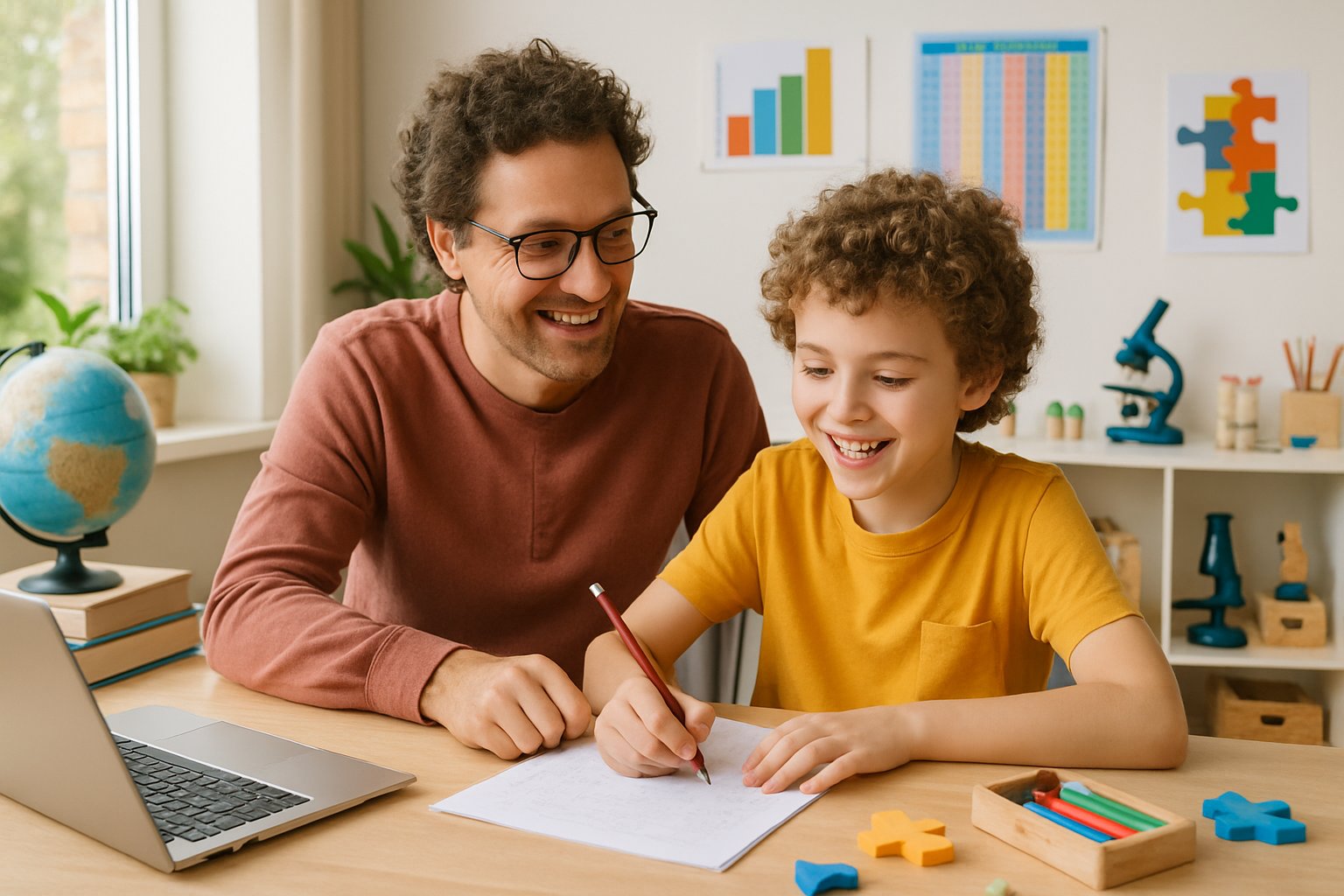Building the Right Learning Environment
Creating a supportive learning environment involves setting up a quiet study space, gathering the right materials, and adding creative tools. These elements work together to help children focus and explore new ideas on their own.
Designating a Distraction-Free Study Area
A dedicated study space helps children focus better on their tasks. Parents should choose a quiet corner of the house away from television, loud conversations, and heavy foot traffic.
The study area needs good lighting and comfortable seating. A desk or table at the right height prevents slouching and keeps children alert during learning time.
Creating a learning-friendly environment starts with removing distractions like toys, games, or electronics that might pull attention away from schoolwork.
Essential features for the study space:
- Quiet location away from noise
- Good natural or desk lighting
- Comfortable chair and proper desk height
- Minimal visual distractions
- Easy access to learning materials
Some families find success using a dining room table as a study space. Others create a permanent desk setup in the child’s bedroom or a spare room.
The key is consistency. Children learn better when they use the same space for studying every day.
Providing Essential Learning Materials
Children need easy access to basic learning tools to work independently. Parents should stock the study area with age-appropriate books, notebooks, pencils, and other supplies.
Basic learning materials include:
- Writing tools (pencils, pens, erasers)
- Notebooks and paper
- Rulers and measuring tools
- Calculators for older children
- Dictionary and reference books
- Educational games and puzzles
Having these materials within arm’s reach prevents interruptions during study time. Children can grab what they need without asking for help or leaving their workspace.
Books should match the child’s reading level and interests. A mix of fiction and non-fiction topics keeps learning fresh and exciting.
Educational games and puzzles provide hands-on learning experiences. These tools help children practice skills while having fun.
Parents should organize materials in bins or shelves so children know where to find everything. Labels on containers help younger children identify supplies quickly.
Incorporating Art Supplies for Creativity
Art supplies boost creativity and make learning more enjoyable for children. Drawing, coloring, and crafting help kids express ideas in different ways.
Useful art supplies for learning:
- Colored pencils and markers
- Construction paper in various colors
- Glue sticks and tape
- Safety scissors
- Stickers and stamps
- Modeling clay or playdough
These materials support different learning styles. Some children understand concepts better when they can draw pictures or create models.
Art projects help children remember information longer. Making a poster about the solar system or drawing story characters creates lasting memories.
Parents should rotate art supplies to keep things interesting. New materials spark curiosity and encourage children to try different creative approaches.
Creative activities also provide breaks from traditional studying. Children can switch between reading and drawing to maintain focus throughout longer learning sessions.
Simple storage solutions like plastic containers or desk organizers keep art supplies neat and accessible. Children learn responsibility by cleaning up after creative projects.
Fostering Motivation and Responsibility
Children develop stronger independent learning habits when they feel motivated and take ownership of their education. Building clear expectations while giving kids choices helps them stay engaged in their learning journey.
Setting Clear Expectations and Achievable Goals
Parents should work with their children to create specific learning goals that match their abilities. When kids help set goals together, they feel more connected to their progress.
Break big goals into smaller steps that children can handle. A child learning to read might start with five minutes of daily practice before moving to longer sessions.
Examples of Clear Expectations:
- Complete homework before screen time
- Read for 15 minutes each day
- Ask for help when stuck for more than 5 minutes
- Keep learning materials organized
Write goals down where children can see them. Use charts or apps that show progress visually. This helps kids track how they’re doing and stay motivated.
Review goals regularly with children. Change them as kids grow and their interests shift. This keeps the learning journey fresh and exciting.
Allowing Choice and Ownership in Learning Tasks
Children learn better when they have some control over their education. Giving children choices makes them feel more responsible for their learning.
Let kids pick which subject to study first each day. They might choose to read about dinosaurs instead of fairy tales. Both options help them practice reading skills.
Offer different ways to complete assignments. Some children prefer writing reports while others like making posters or giving presentations.
Ways to Provide Learning Choices:
- Pick books from a pre-selected list
- Choose between different math practice methods
- Select project topics within required subjects
- Decide the order of daily learning activities
Encourage children to explore topics that interest them. When a child shows curiosity about space, provide books and videos about planets and astronauts.
Give kids ownership of their learning space. Let them organize their desk or choose where to study. This helps them feel in control of their education.
Praising Effort and Celebrating Achievements
Recognition motivates children to keep working hard at independent learning. Focus praise on effort rather than just results. This teaches kids that trying hard matters more than being perfect.
Say “You worked really hard on that math problem” instead of “You’re so smart.” This helps children understand that effort leads to success.
Celebrate achievements both big and small. A child who remembers to do homework without reminders deserves recognition just like one who gets an A on a test.
Simple Ways to Celebrate Progress:
- Create a display wall for completed work
- Give high-fives for meeting daily goals
- Share successes with family members
- Take photos of proud learning moments
Make celebrations match the child’s personality. Some kids love public praise while others prefer quiet recognition. Pay attention to what motivates each individual child.
Remember to celebrate the learning process, not just final grades. When children see mistakes as part of learning, they become more willing to try new challenges.
Developing Problem-Solving and Critical Thinking Skills
Building strong thinking skills helps children become better independent learners who can tackle challenges on their own. Critical thinking skills enable students to analyze and evaluate information while making smart choices about their learning.
Encouraging Curiosity and Questioning
Children naturally ask lots of questions, and parents should welcome this behavior. When kids ask “why” or “how,” parents can guide them to find answers together instead of just giving quick responses.
Parents can model curiosity by asking questions out loud during daily activities. “I wonder why the leaves change colors” or “How do you think this machine works?” shows children that questioning is normal and good.
Question starters that work well:
- What do you think would happen if…?
- Why do you think that happened?
- How could we find out more?
- What other ways could we try?
Curiosity fuels the desire to explore and understand the world, which builds the foundation for independent thinking. Children who feel safe asking questions develop stronger problem-solving abilities.
Parents should avoid shutting down questions, even when they seem silly. Every question is a chance for learning and thinking practice.
Supporting Open-Ended Exploration
Open-ended activities let children explore without one “right” answer. These experiences help kids think creatively and develop their own solutions to problems.
Effective open-ended activities include:
- Building with blocks or recycled materials
- Art projects without specific instructions
- Science experiments that test different ideas
- Cooking where kids can suggest changes
Parents can ask follow-up questions during these activities. “What happens if you try a different way?” or “Tell me about your thinking” encourages deeper exploration.
Encouraging artistic expression is a fundamental way to develop children’s critical thinking. Creative activities teach kids that multiple solutions can work for the same problem.
When children get stuck, parents should resist jumping in right away. Waiting a few moments gives kids time to think through challenges themselves.
Introducing Real-World Challenges
Real problems help children see how thinking skills matter in daily life. These challenges should match the child’s age and abilities while still being interesting.
Age-appropriate real-world challenges:
| Ages 5-7 | Ages 8-10 | Ages 11+ |
|---|---|---|
| Planning a family picnic | Managing weekly allowance | Research family vacation options |
| Organizing toys efficiently | Growing a small garden | Plan and cook a family meal |
| Solving playground conflicts | Comparing prices while shopping | Investigate community problems |
Parents can guide children through problem-solving steps. First, they identify the problem clearly. Next, they brainstorm possible solutions. Then they pick the best option and try it out.
Teaching critical thinking skills helps children develop analysis, evaluation, and problem-solving abilities they need for future success. Real challenges make these skills feel important and useful.
Children should reflect on what worked and what didn’t after trying their solutions. This builds their ability to learn from experience and improve their thinking over time.
Supporting Self-Assessment and Reflection
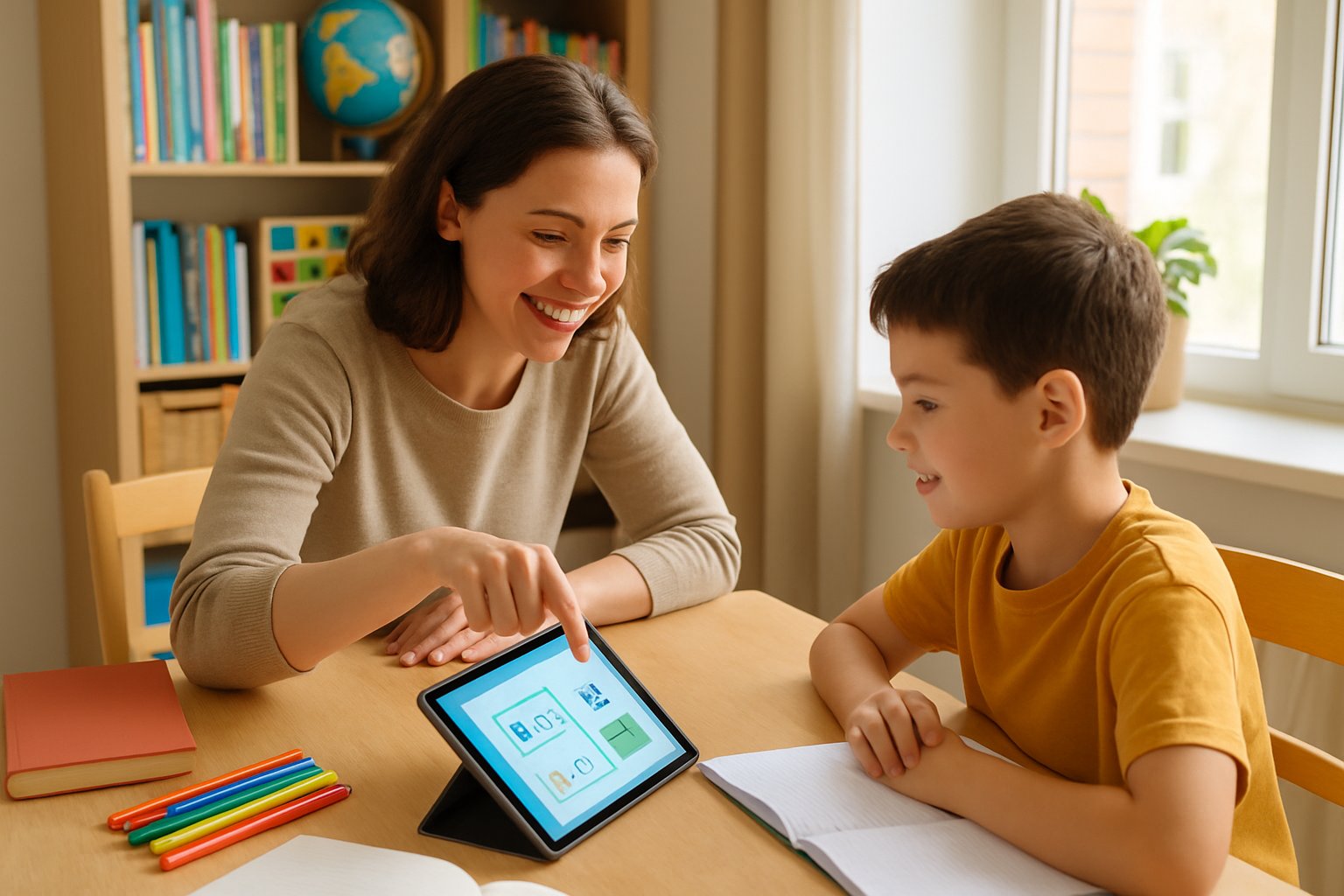
Teaching children to evaluate their own work and think about their progress builds confidence and ownership in their learning journey. These skills help young learners become more independent and aware of their strengths and areas for growth.
Guiding Children to Reflect on Progress
Parents can start by asking simple questions after homework or activities. “What was easy for you today?” and “What felt challenging?” help children think about their experiences.
Creating a reflection routine makes this process natural. Set aside five minutes after study time for children to share what they learned. This builds the habit of looking back on their work.
Use a simple traffic light system to help younger children express their understanding. Green means “I get it,” yellow means “I’m not sure,” and red means “I need help.” This visual approach helps students identify their learning needs.
Weekly reflection journals work well for older children. They can write about what they accomplished, what they found difficult, and what they want to improve next week.
Ask children to compare their current work to previous assignments. This shows them how much they have grown over time. Keep examples of their work from earlier months to make these comparisons clear.
Teaching Self-Assessment Techniques
Show children how to use simple checklists before turning in their work. A basic checklist might include “Did I answer all questions?” and “Did I check my spelling?” These tools encourage students to take ownership of their learning.
Create rubrics together with your child for different types of assignments. For a book report, they might check for a clear beginning, middle, and end. For math homework, they can verify they showed their work.
Teach children to grade their own practice tests before checking the answers. This helps them notice patterns in their mistakes and celebrate what they did well.
Use peer comparison carefully. Children can look at a friend’s work to see different approaches, but emphasize that everyone learns differently. The goal is learning, not competition.
Digital tools can make self-assessment more engaging. Simple online quizzes give instant feedback and help children track their progress over time.



